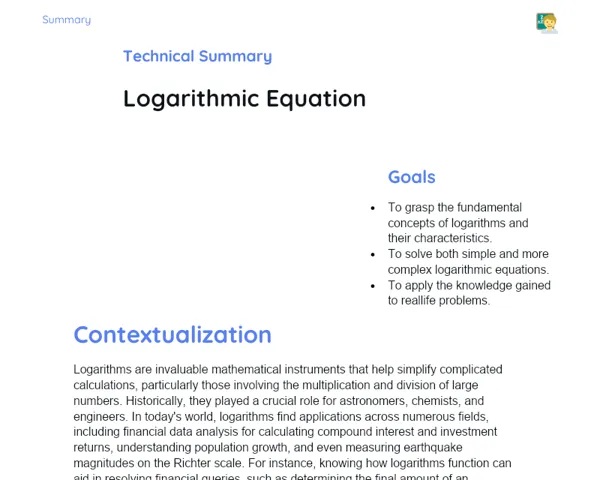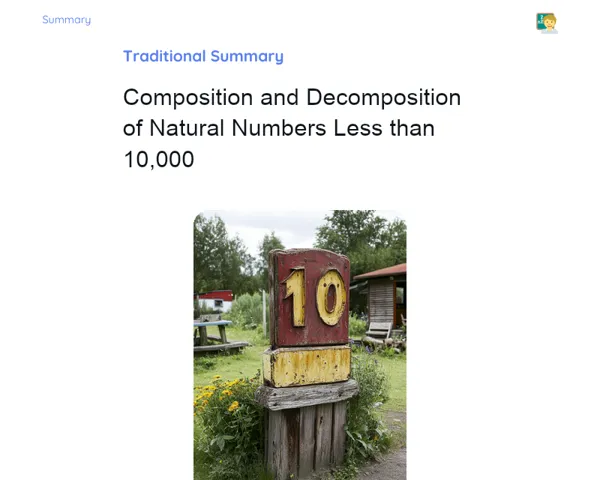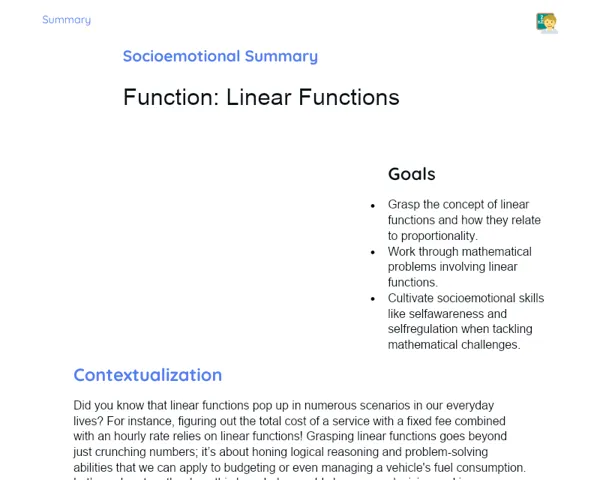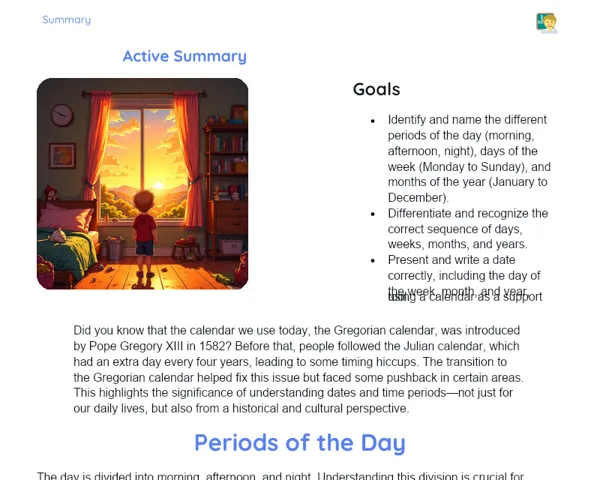Socioemotional Summary Conclusion
Goals
1. Understand the concept of probability and how it can be used to predict outcomes in various scenarios.
2. Develop the ability to recognise and articulate the emotions that come with learning about probability.
3. Engage in practical activities using coins, dice, and cards to apply probability concepts.
4. Reflect on the emotions experienced during these activities and learn effective ways to regulate them.
Contextualization
Have you ever considered why, when tossing a coin, it can land on both 'heads' and 'tails'? Or why some people seem to have a knack for predicting outcomes? Probability helps us understand these everyday curiosities and so much more! We'll utilise coins, dice, and cards to explore how maths empowers us to make predictions and informed choices. 🎉
Exercising Your Knowledge
Definition of Probability
Probability is a way to measure how likely it is that a certain event will happen. Imagine being able to predict outcomes based on data instead of just guessing. That’s the beauty of probability! It’s represented as a number between 0 and 1, where 0 means an event cannot happen, and 1 means it’s certain to happen.
-
Chance Quantification: Probability gives us a method to measure how likely events are, which improves our predictions.
-
Range of Values: Probability varies from 0 to 1, where 0 indicates an impossible event and 1 indicates certainty.
-
Applicability: It can be applied in numerous situations, from simple games like tossing a coin to intricate risk assessments in finance.
Random Events
Random events are those whose outcomes we can't predict with certainty. With probability, we can understand how various outcomes might pan out. Think about the thrill of rolling a die, where you don’t know the exact number, yet you have a sense of the chances for each!
-
Uncertainty: Randomness means we can’t foresee the exact outcome, adding an element of excitement.
-
Distribution: Probability aids us in understanding how different potential results are spread out.
-
Practical Examples: Tossing a coin, rolling a die, or drawing a card from a deck are classic examples of random events.
Sample Space
The sample space is the complete set of all potential outcomes from an experiment. Grasping the sample space is like having a roadmap of all possibilities. For instance, when rolling a die, the sample space consists of the numbers 1 through 6.
-
Mapping Possibilities: Understanding the sample space is essential for accurately working out probabilities.
-
Complete Understanding: It helps us visualise all possible options, which is key for probability analysis.
-
Importance in Experiments: Being aware of the potential outcomes is critical in any probability experiment.
Independent and Dependent Events
Independent events are those where one event doesn’t influence another, like flipping two coins. In contrast, dependent events are where the outcome of one affects another, like drawing two cards from a deck without putting the first one back.
-
Independent Events: One event's outcome doesn’t change another’s, making it easier to analyse results.
-
Dependent Events: The result of one event influences the next, requiring more complex calculations.
-
Importance in Analysis: Knowing the difference between independent and dependent events is crucial for correct probability calculations.
Key Terms
-
Probability: Measurement of how likely an event is to occur, ranging from 0 (impossible) to 1 (certain).
-
Random Event: An event with an unpredictable outcome.
-
Sample Space: The set of all possible results from an experiment.
-
Independent Event: An event that does not affect the outcome of another.
-
Dependent Event: An event whose outcome affects another event.
For Reflection
-
How do you feel when the result doesn’t match your probabilistic prediction, and how can you manage that emotion?
-
In what ways can understanding probability empower you to make better decisions beyond the classroom?
-
Think of a situation where probability could help predict an outcome. How might that influence your emotions and approach to uncertainty?
Important Conclusions
-
Grasping probability enables us to predict outcomes and make informed decisions, in everything from games to real-life situations.
-
Being able to recognise and articulate our emotions during maths activities enhances emotional intelligence and boosts academic success.
-
Applying probability through practical activities with coins, dice, and cards makes learning more tangible and enjoyable.
-
Taking time to reflect on the emotions experienced while working with probability and learning how to manage them fosters a positive learning environment.
Impacts on Society
Probability significantly influences our everyday lives, affecting choices like deciding to carry an umbrella based on the weather forecast to complex decisions in finance and healthcare. Understanding probability helps us evaluate risks, plan accordingly, and predict outcomes more accurately, making us more informed individuals prepared to navigate uncertainties.
On an emotional level, learning to handle uncertainty and predictions improves our ability to manage frustrations and expectations. Understanding that an unexpected result is simply part of the realm of probability can ease anxiety and boost resilience. This emotional literacy is especially pertinent in a world often filled with uncertainty.
Dealing with Emotions
To manage your emotions while engaging with probability, why not try an emotional reflection exercise at home? Begin by taking a quiet moment to think about a time when your prediction didn’t match the outcome. Acknowledge and write down the feelings that arose in that moment. Then, analyse those emotions—were you surprised, frustrated, or maybe even pleased? Define each emotion clearly and consider how you responded. Finally, brainstorm strategies for handling similar emotions in the future. This could involve strategies like deep breathing, taking a moment to reflect, or discussing your feelings with someone you trust.
Study Tips
-
Create a prediction journal: Jot down your predictions in various real-life situations and compare them with the actual results. This approach can help clarify probability concepts.
-
Incorporate games: Use games like cards, dice, or even probability apps to make learning more enjoyable and hands-on.
-
Share ideas with friends: Talking about your predictions and their outcomes with peers can provide fresh insights and enhance your understanding of the topic.



